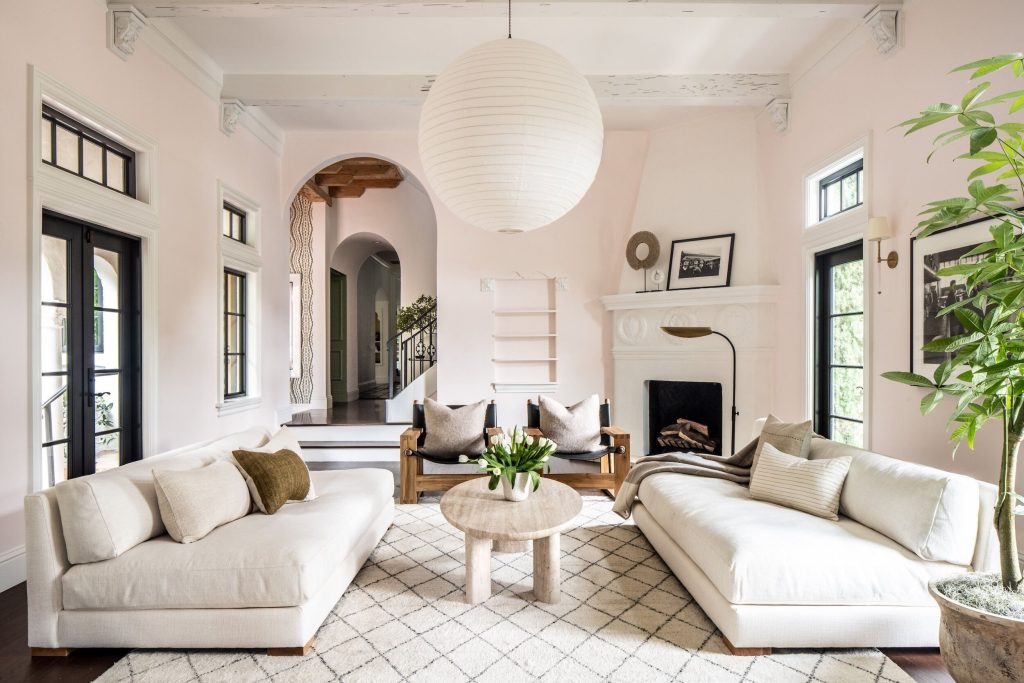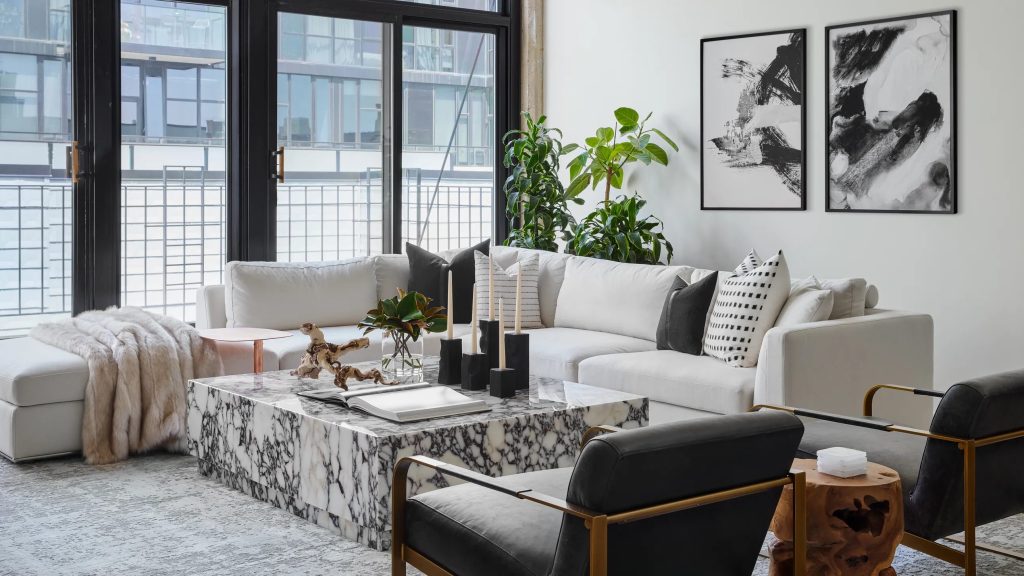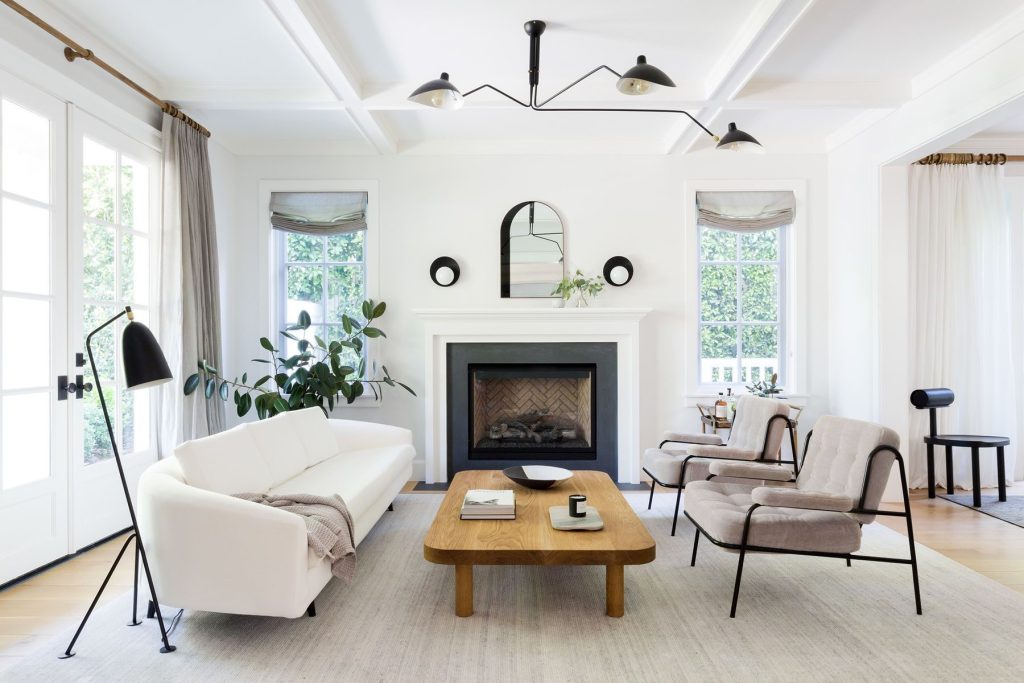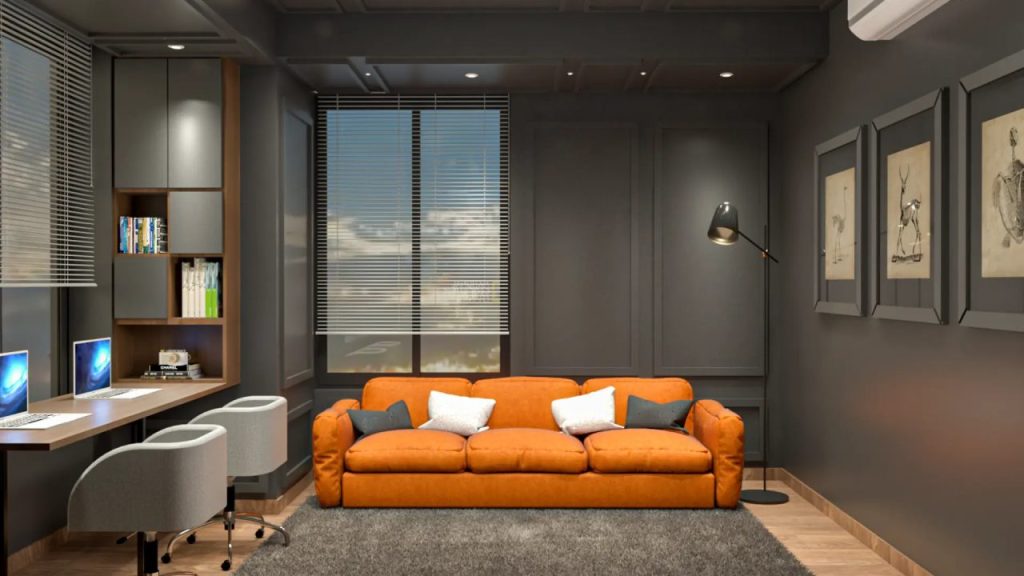Living rooms are the quintessential gathering spaces in our homes, where tranquility meets functionality in perfect harmony. The zeitgeist of modern interior design has increasingly gravitated toward minimalism, a design philosophy that epitomizes the “less is more” approach pioneered by Ludwig Mies van der Rohe.
This sophisticated aesthetic not only creates visually appealing spaces but also promotes mental clarity and reduced stress through its uncluttered principles.
In today’s fast-paced world, where digital distractions and material excess often overwhelm our daily lives, minimalist living rooms offer a refreshing respite. These thoughtfully curated spaces emphasize quality over quantity, focusing on essential elements while eliminating superfluous decorations.
Minimalist Living Room Ideas
Whether you’re renovating your existing living room or starting from scratch, these 15 minimalist ideas will help you create a space that’s both aesthetically pleasing and functionally efficient.
1. Monochromatic Color Schemes

The foundation of minimalist design often begins with a carefully selected monochromatic palette. Choosing varying shades of a single color creates depth and interest while maintaining visual coherence. White, beige, or gray serve as excellent base colors, allowing you to layer different tones and textures within the same color family.
Consider incorporating subtle variations of your chosen hue through furniture upholstery, wall paint, and decorative accessories. This approach creates a sophisticated atmosphere while avoiding the monotony that some might associate with single-color designs. The key is to balance lighter and darker shades to create visual interest without compromising the minimalist aesthetic.
2. Natural Light Maximization

Natural light is a crucial element in minimalist design, acting as a natural highlighter for clean lines and simple forms. Large windows with minimal coverings allow maximum daylight penetration while creating a seamless connection with the outdoor environment. When privacy is needed, opt for simple roller blinds or sheer curtains in neutral tones.
Floor-to-ceiling windows can be particularly effective, especially when combined with strategically placed mirrors that reflect and amplify natural light throughout the space. This approach not only reduces the need for artificial lighting during daylight hours but also creates an uplifting atmosphere that enhances the room’s minimalist features.
3. Statement Furniture Pieces

In minimalist design, each piece of furniture should serve a purpose and make a statement. Choose one or two signature pieces, such as a sculptural sofa or an architecturally interesting chair, to serve as focal points. These pieces should combine form and function, featuring clean lines and neutral colors that complement the overall design scheme.
Quality materials and craftsmanship become particularly important when working with fewer pieces. Invest in well-made furniture that will stand the test of time, both in terms of durability and style. Consider pieces with hidden storage to maintain the clutter-free aesthetic while maximizing functionality.
4. Geometric Patterns and Forms

Incorporating subtle geometric patterns can add visual interest without overwhelming the space. Look for furniture and accessories that feature clean, geometric shapes – such as circular coffee tables, square ottomans, or rectangular rugs with simple linear patterns.
The key is to use these geometric elements sparingly and intentionally. Too many competing patterns can disrupt the minimalist harmony. Instead, choose one or two geometric elements that complement each other and the room’s overall design scheme.
5. Hidden Storage Solutions

Effective storage is crucial in maintaining a minimalist living room. Built-in cabinets that blend seamlessly with the walls can provide ample storage while maintaining clean lines. Consider furniture pieces with dual purposes, such as ottoman coffee tables with internal storage or floating shelves that double as display spaces.
The goal is to keep everyday items easily accessible but out of sight. This might involve custom cabinetry solutions or innovative furniture designs that prioritize both form and function. Remember that the success of a minimalist space often lies in what you don’t see.
6. Textural Elements

While minimalism often emphasizes clean lines and simple forms, incorporating different textures can add depth without complexity. Consider combining smooth leather, soft wool, rough jute, or sleek metal surfaces to create tactile interest while maintaining a cohesive color palette.
Textural elements can be introduced through area rugs, throw pillows, or wall treatments. The key is to choose materials that complement each other while providing subtle contrast. This approach adds warmth and character to the space without compromising its minimalist principles.
7. Negative Space Utilization

Embracing empty space is fundamental to minimalist design. Rather than viewing empty areas as spaces to fill, consider them essential design elements that create visual breathing room and enhance the impact of your chosen pieces.
Strategic use of negative space helps prevent visual clutter and allows each element in the room to stand out. This approach requires careful consideration of furniture placement and a resistance to the urge to fill every corner.
8. Sustainable Materials

Incorporating sustainable materials aligns perfectly with minimalist principles of quality and intentionality. Choose furniture and accessories made from renewable resources such as bamboo, reclaimed wood, or recycled materials. These elements add character while promoting environmental consciousness.
The natural imperfections and variations in sustainable materials can add organic beauty to your space. Consider how these elements can work together to create a harmonious environment that reflects both minimalist aesthetics and environmental values.
9. Minimalist Lighting Fixtures

Lighting fixtures in a minimalist living room should serve as both functional elements and sculptural pieces. Choose sleek pendant lights, understated floor lamps, or recessed lighting that complements the room’s clean lines. Modern LED fixtures with simple geometric shapes can add architectural interest while maintaining the minimalist aesthetic.
The placement of lighting fixtures should be strategic, creating layers of illumination without visual clutter. Consider dimmable options to adjust the ambiance according to different times of day or activities. Remember that the fixtures themselves should be as visually lightweight as possible while still making a subtle design statement.
10. Vertical Space Optimization

Maximizing vertical space is crucial in minimalist design, drawing the eye upward and creating an illusion of higher ceilings. Floor-to-ceiling bookshelves with carefully curated displays, tall plants, or vertical panel treatments can add visual interest while maintaining clean lines.
Consider incorporating wall-mounted elements that don’t take up floor space, such as floating shelves or hanging plants. This approach not only preserves the open feel of the room but also adds depth and dimension without compromising the minimalist aesthetic.
11. Natural Elements Integration

Incorporating natural elements adds warmth and life to minimalist spaces. Large indoor plants with simple silhouettes, such as fiddle leaf figs or snake plants, can serve as living sculptures. Choose pots and planters with clean lines and neutral colors to maintain the minimalist theme.
Natural materials like stone, wood, and bamboo can be integrated through furniture pieces or decorative elements. These materials add organic texture and warmth while connecting the interior space with the natural world. The key is to select specimens and materials that complement rather than compete with the room’s design.
12. Accent Wall Design

While minimalism often favors neutral walls, a thoughtfully designed accent wall can add personality without overwhelming the space. Consider textured plaster, natural stone, or a slightly darker shade of your base color to create subtle visual interest.
The accent wall should complement rather than dominate the room’s design. Keep decorative elements on this wall minimal, allowing the surface treatment itself to serve as the focal point. This approach adds depth to the space while maintaining the overall minimalist aesthetic.
13. Technology Integration

In modern living rooms, technology is often essential but can disrupt minimalist design. Consider solutions like hidden TV panels, wireless charging stations integrated into furniture, or speakers that blend seamlessly with the décor. The goal is to maintain functionality without compromising aesthetic clarity.
Cable management becomes crucial in maintaining clean lines. Invest in solutions that keep wires hidden and organized, such as built-in cable channels or furniture pieces designed with technology integration in mind. This attention to detail helps preserve the uncluttered appearance essential to minimalist design.
14. Artwork Selection

In minimalist spaces, artwork should be carefully selected for maximum impact. Choose one or two large-scale pieces rather than multiple small ones. Abstract art with simple compositions or black and white photography can be particularly effective in maintaining the minimalist aesthetic.
The placement of artwork should be intentional, with adequate negative space around each piece to allow it to breathe. Consider the relationship between the artwork and surrounding furniture, ensuring that colors and forms complement rather than compete with each other.
15. Seasonal Adaptability

A truly successful minimalist living room should be able to adapt to changing seasons while maintaining its essential character. Consider incorporating easily changeable elements like throw pillows or small decorative items that can be updated seasonally without disrupting the overall design.
Storage solutions for seasonal items become crucial in maintaining the uncluttered aesthetic year-round. Think about how different textures and materials can be rotated to reflect the changing seasons while staying true to minimalist principles. This approach allows for fresh updates while maintaining the room’s cohesive design.
Conclusion
Minimalist living room design is more than just a trend – it’s a thoughtful approach to creating spaces that promote peace, functionality, and aesthetic harmony. By implementing these fifteen ideas, you can transform your living room into a sanctuary that reflects the essence of minimalist philosophy while maintaining personal comfort and style.
Remember that successful minimalist design is not about deprivation but rather about making intentional choices that enhance both the visual appeal and functionality of your space. The key lies in finding the perfect balance between simplicity and personality, creating a living room that feels both sophisticated and welcoming.

